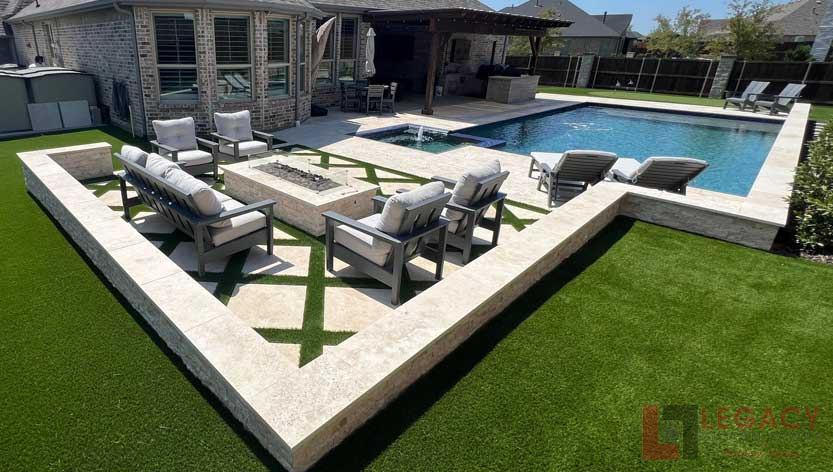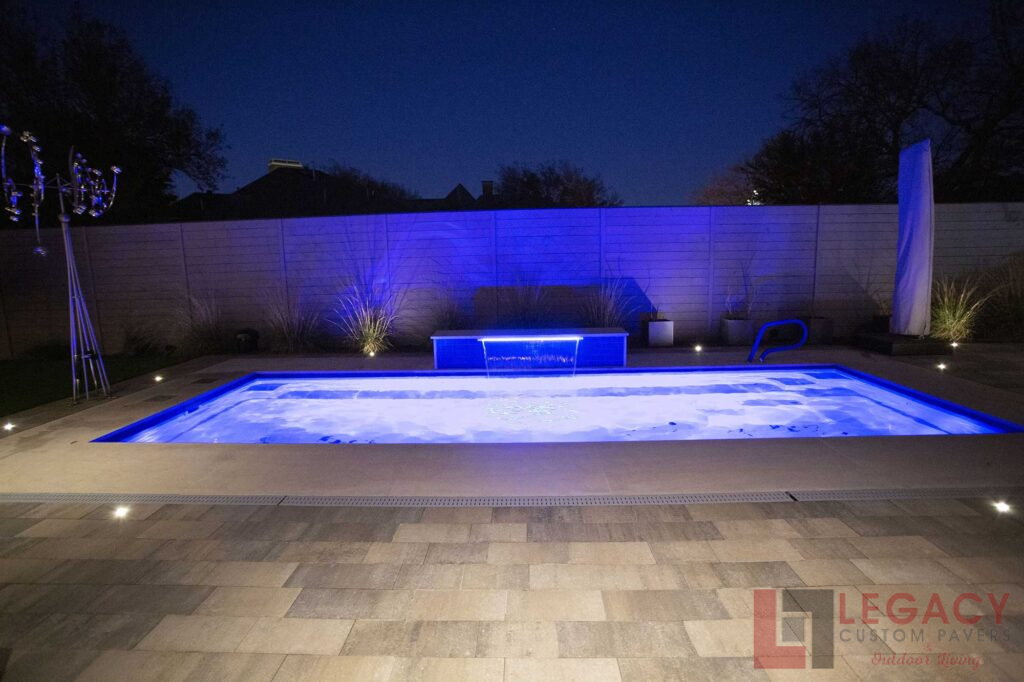Summertime in Texas calls for long, leisurely days by the pool, basking in the warmth of the sun. But if the area around your pool is more functional than fabulous, it might be time to consider an upgrade. Paving your pool area can transform your backyard into a luxurious oasis. In this article, we’ll explore how selecting the right pavers can elevate your Texas pool, enhancing its beauty, functionality, and safety.
The Importance of Choosing the Right Pavers
Pavers are more than just stones; they are the foundation of your outdoor aesthetic. The right choice can enhance your pool’s appeal and ensure it withstands the test of time and weather.
- Durability: Texas weather can be harsh, making durability a key factor in choosing pavers.
- Aesthetics: The right pavers complement your home’s architecture and landscape.
- Safety: Opt for non-slip surfaces to keep pool areas safe.
Types of Pavers for Pool Areas
Selecting the perfect pavers for your pool area means considering the types available, each offering unique benefits.
- Concrete Pavers: Versatile and cost-effective, they come in various colors and textures.
- Brick Pavers: Offer a classic look, providing durability and slip resistance.
- Stone Pavers: Natural stone pavers, like limestone and travertine, offer unique patterns and colors for an upscale look.
Design Ideas for Pool Pavers
Your pool’s design sets the tone for your backyard. Consider these ideas to create a stunning poolside.
- Modern Minimalism: Sleek lines and monochromatic colors create a contemporary look.
- Rustic Charm: Use irregular stone pavers for a natural, countryside feel.
- Tropical Oasis: Combine lush landscaping with warm-colored pavers for a tropical vibe.
Installation Tips
Proper installation ensures your pavers last. Here’s how to get it right:
- Preparing the Ground: Ensure a stable base by compacting the soil and adding a layer of sand.
- Laying the Pavers: Lay them closely to prevent shifting and fill the joints with sand.
- Sealing and Finishing: Seal the pavers to protect against stains and enhance their color.
Maintenance of Pool Pavers

Keep your pavers looking pristine with these maintenance tips:
- Regular Cleaning: Sweep and wash your pavers regularly to prevent dirt buildup.
- Sealing: Reapply sealant every two years to protect against the elements.
- Repair: Replace cracked or shifted pavers promptly to maintain safety and appearance.
Cost Considerations
While pavers add value, they require an upfront investment. Here’s how to budget effectively:
- Budgeting for Pavers: Costs vary by material type, so choose one that fits your budget and style.
- Cost vs. Value: Investing in high-quality pavers can enhance your property’s value and enjoyment.
Environmental Considerations
Choosing environmentally friendly pavers can contribute to a sustainable outdoor space.
- Permeability: Permeable pavers allow water to filter through, reducing runoff.
- Heat Reflection: Light-colored pavers reflect sunlight, keeping the area cooler.
Common Mistakes to Avoid
Avoid these pitfalls to ensure a successful paver project:
- Poor Planning: Measure your space and plan your design carefully.
- Skimping on Materials: Investing in quality pavers pays off in the long run.
- Neglecting Drainage: Ensure proper drainage to prevent water damage.
Why Choose a Professional Installer
For the best results, consider hiring a professional:
- Expertise and Experience: Professionals can handle complex designs and ensure proper installation.
- Warranty and Guarantees: Many offer warranties on their work, providing peace of mind.
Conclusion

Paving your pool area can transform your backyard into a stunning retreat. By choosing the right pavers, considering design and installation carefully, and maintaining your space, you can create a beautiful and durable pool area that enhances your Texas home.
If you ever need a paver pool deck solution in the Dallas/Fort Worth area, we’re here to help! Give us a call or request a free estimate.
FAQs
Q. What is the best type of paver for a Texas pool area?
A. The best type depends on your budget, style preference, and durability needs. Concrete, brick, and stone pavers are all popular choices.
Q. How often should I seal my pool pavers?
A. It’s recommended to seal your pavers every two years to protect them from the elements and maintain their appearance.
Q. Can I install pool pavers myself?
A. While DIY installation is possible, professional installation ensures longevity and adherence to safety standards.
Q. How do I choose the right color pavers for my pool area?
A. Consider your home’s exterior, landscape, and desired ambiance. Neutral colors offer versatility, while bold colors can create a statement.
Q. Are permeable pavers a good option for pool areas?
A. Permeable pavers are excellent for pool areas as they allow water to drain through, reducing slip hazards and contributing to a sustainable landscape.
